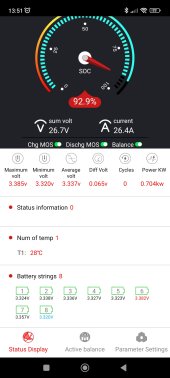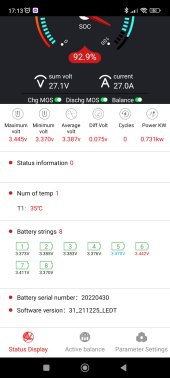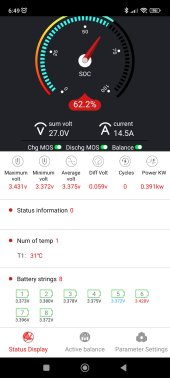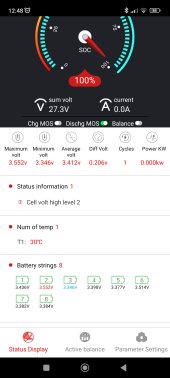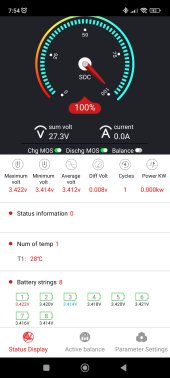I've got BMS cell high volt protect set at 3.6v (28.8v) and low at 2.8v (22.4v). My hybrid inverter is set to 28v bulk charge, 27v float and 24v low disconnect. Does that sound okay?
I found there was A little bit of art to finding the best bulk and float settings.
I ended up going with 3.475 per cell In bulk charge, for float, I ended upsetting it so that when my batteries were fully charged by noon, I slowly put the float setting up to where power in from the SCC equaled the loads in the house. For my Victron SCCs, float ended up being equal to the bulk charge mode. That way I did not go into the night with a battery pack at 80% once the sun set. I want to go into the night at 100 %.
When I had float set lower, I found that once my batteries were fully charged, I might turn on a 300 watt load, and the SCC would only put 100 watts back in the system. In my case once I was charged at noon, there were five or more hours left where I could get enough energy from the sun to cover the loads. Don’t want to start the night at a low SOC.
When I started designing my system, I wanted the batteries to finish charging when the sun went down. That sounds good, but loads are not a steady kWh per day and very greatly. Anywhere from 1 kWh to 18 kWh per day is what I use. The solar harvest was not consistent. I found anywhere from 1 kWh on a cloudy day to 20 kWh on a sunny day in summer is a good expectation.
By setting float so high, my batteries may die earlier, but not in any time I will truly notice. Perhaps in 10 years instead of 12 Years. Not worth it to me. I can be in the RV up to 2 months a year, and no one really knows how long these batteries will last. I think 10 years is a worst case and at thousands of cycles, I expect my kids could be getting the batteries someday.



